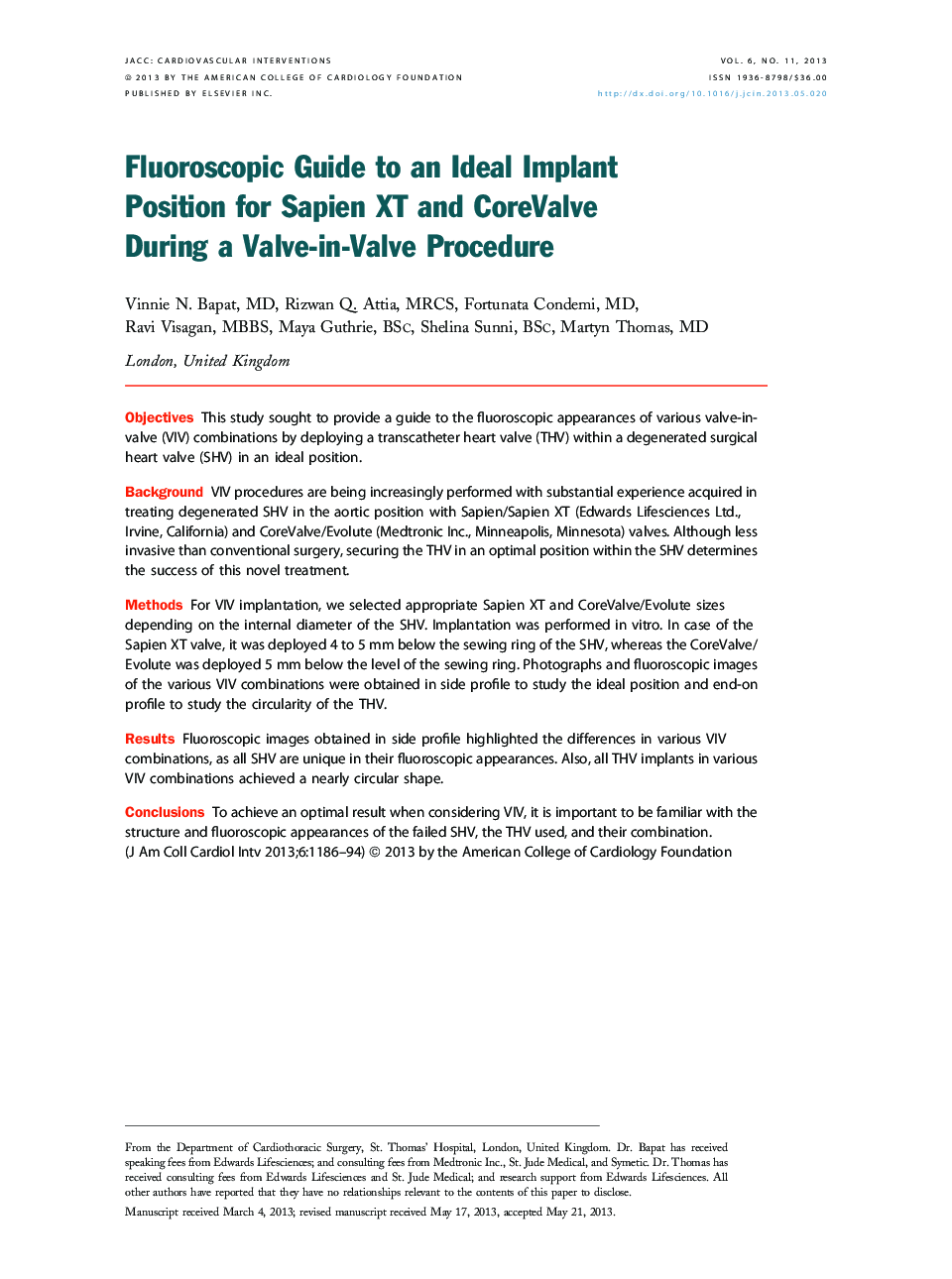| Article ID | Journal | Published Year | Pages | File Type |
|---|---|---|---|---|
| 2940469 | JACC: Cardiovascular Interventions | 2013 | 9 Pages |
ObjectivesThis study sought to provide a guide to the fluoroscopic appearances of various valve-in-valve (VIV) combinations by deploying a transcatheter heart valve (THV) within a degenerated surgical heart valve (SHV) in an ideal position.BackgroundVIV procedures are being increasingly performed with substantial experience acquired in treating degenerated SHV in the aortic position with Sapien/Sapien XT (Edwards Lifesciences Ltd., Irvine, California) and CoreValve/Evolute (Medtronic Inc., Minneapolis, Minnesota) valves. Although less invasive than conventional surgery, securing the THV in an optimal position within the SHV determines the success of this novel treatment.MethodsFor VIV implantation, we selected appropriate Sapien XT and CoreValve/Evolute sizes depending on the internal diameter of the SHV. Implantation was performed in vitro. In case of the Sapien XT valve, it was deployed 4 to 5 mm below the sewing ring of the SHV, whereas the CoreValve/Evolute was deployed 5 mm below the level of the sewing ring. Photographs and fluoroscopic images of the various VIV combinations were obtained in side profile to study the ideal position and end-on profile to study the circularity of the THV.ResultsFluoroscopic images obtained in side profile highlighted the differences in various VIV combinations, as all SHV are unique in their fluoroscopic appearances. Also, all THV implants in various VIV combinations achieved a nearly circular shape.ConclusionsTo achieve an optimal result when considering VIV, it is important to be familiar with the structure and fluoroscopic appearances of the failed SHV, the THV used, and their combination.
